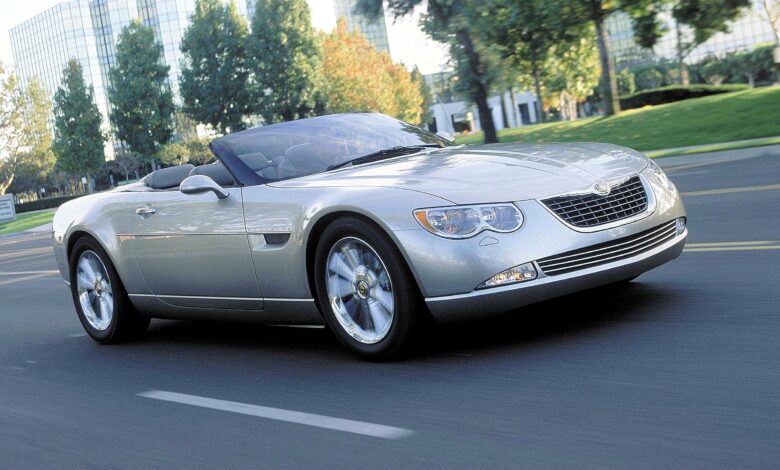
In the late 1990s and early 2000s, Chrysler’s design studio was known for producing some of the best-looking concept cars in the automotive industry. Coming off the widely successful launch of the 1999 Dodge Charger R/T Concept at the 1999 North American International Auto Show (NAIAS) in Detroit, the Chrysler Design Studio was looking to outshine the previous year’s success with the debut of a new four-passenger V8-powered rear-wheel-drive convertible design at the 2000 NAIAS show.
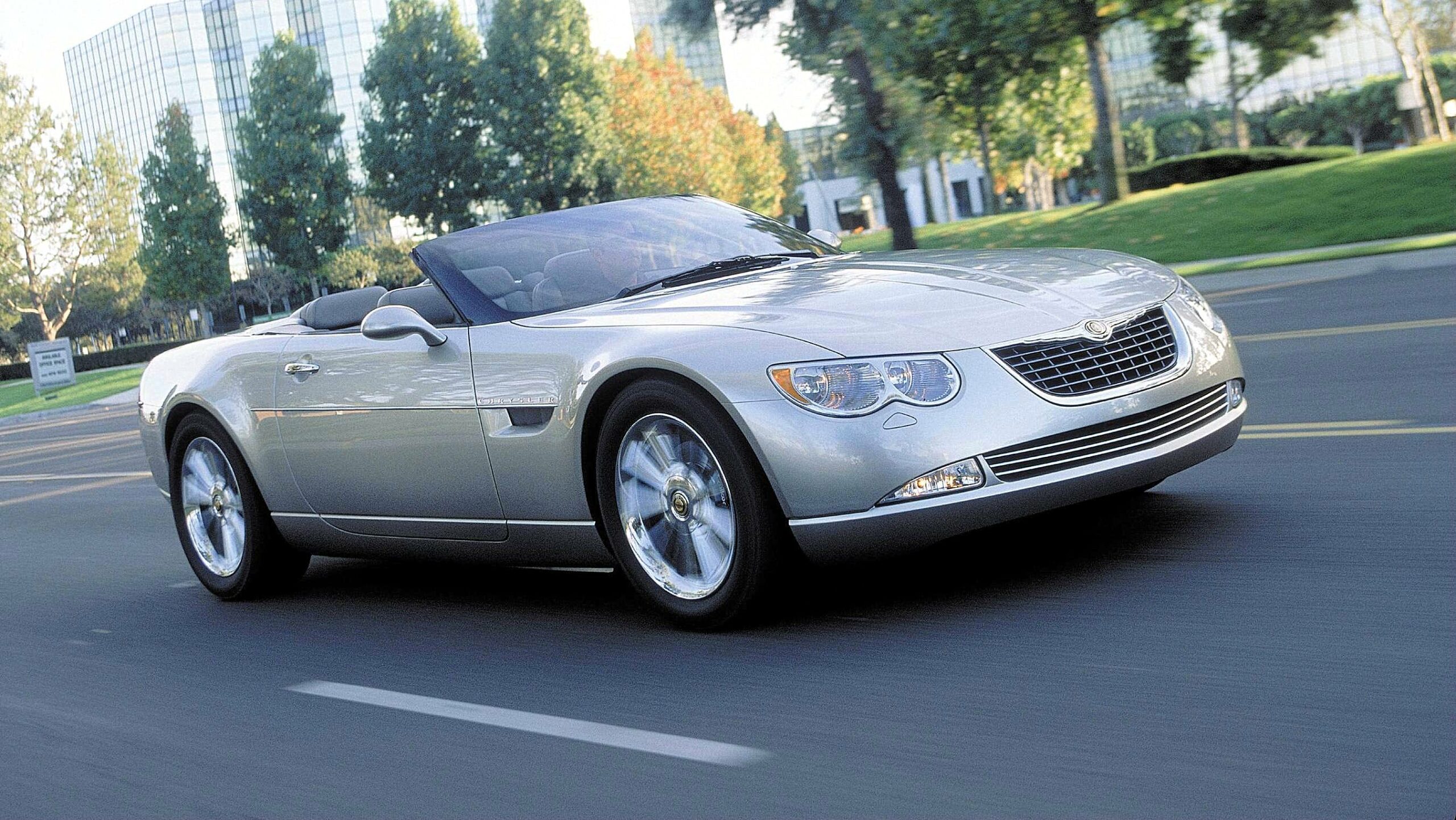
That car was the Chrysler 300 HEMI C Concept car. The concept combined the muscular styling from the already successful Chrysler 300M sedan and blended it with more elegance and luxury, with the addition of a new HEMI motor. It was this car that had the automotive world’s ears a buzz about what was next for the Chrysler brand.
The Chrysler 300 HEMI C Concept’s design paid homage to the legendary 1957 Chrysler 300C. A car that is considered to be the ultimate “banker’s hot rod”. A monocoque profile with pronounced wheel flares and a seemingly endless hood were some of the design characteristics that set the car apart from other vehicles of that era.
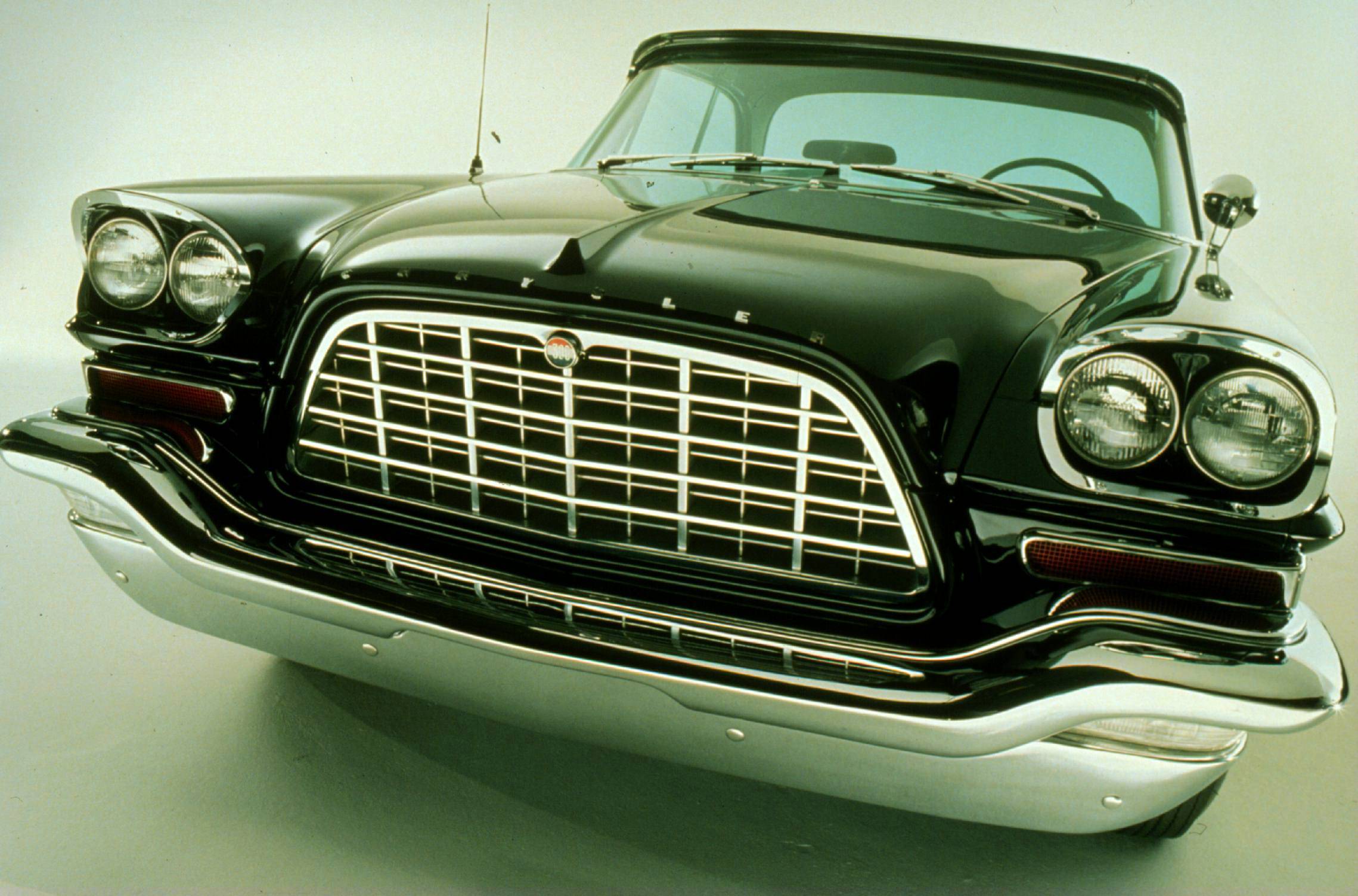
Joe Dehner, then Senior Design Manager and responsible for the exterior design said, “It is as if we stretched the body around the V8 HEMI engine. The concept’s rear-wheel-drive set-up allowed for a minimal front overhang, while the front fender air exhaust ports and the centrally placed chrome twin exhaust pipes signal its performance. And similar to […] the Chrysler Sebring, this concept is a true four-seat convertible.”
The elegant and yet “blue-collar luxury” of the concept car’s clean, sleek, and athletic lines are showcased. The sculpted hood focuses your attention on the Chrysler winged badge and enlarged 300M-styled chrome grille, which gives the car a muscular look. A center peak line ran from the front to the rear of the vehicle and worked with the racked chrome bodyside moldings to give the car a chiseled appearance. The car was painted in a handsome Frosted Mocha Pearlcoat finish, to give a more upscale look.
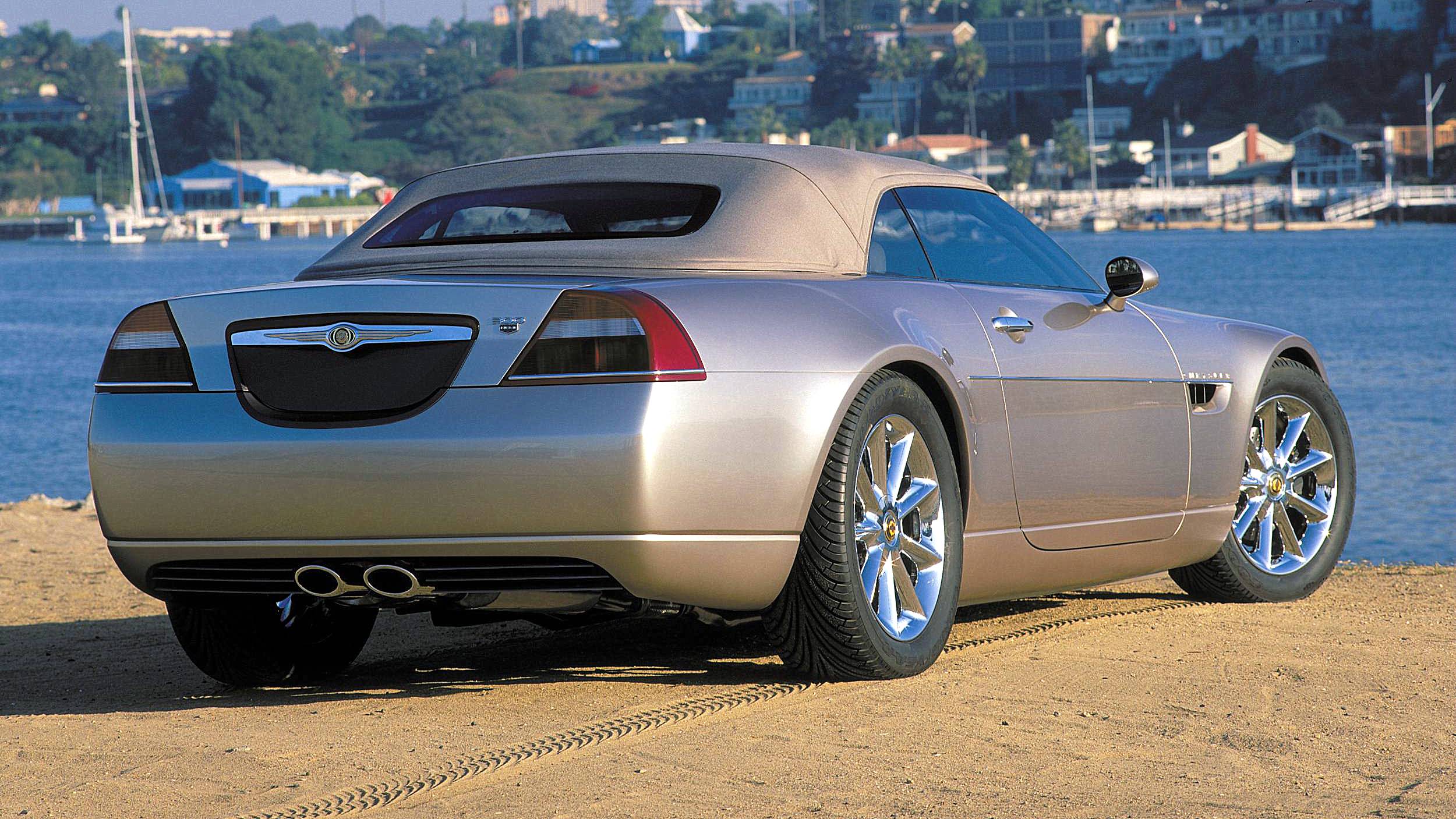
Dehner’s attention to detail is expressed in the front and rear lighting treatment, which provided a visual link to the then performance-oriented 300M. Sculpted chrome door handles and the center high-mounted stop light (CHMSL) wrapped around the Chrysler winged badge also blended safety and style into the design that looked like it could have easily been put into production.
The interior design of the 300 HEMI C Concept, didn’t stray away from the theme of the exterior. Mimicking the chrome bodyside molding, wedged California walnut molding linked the instrument panel to the hard-cover tonneau which featured an automatic roll-over bar.
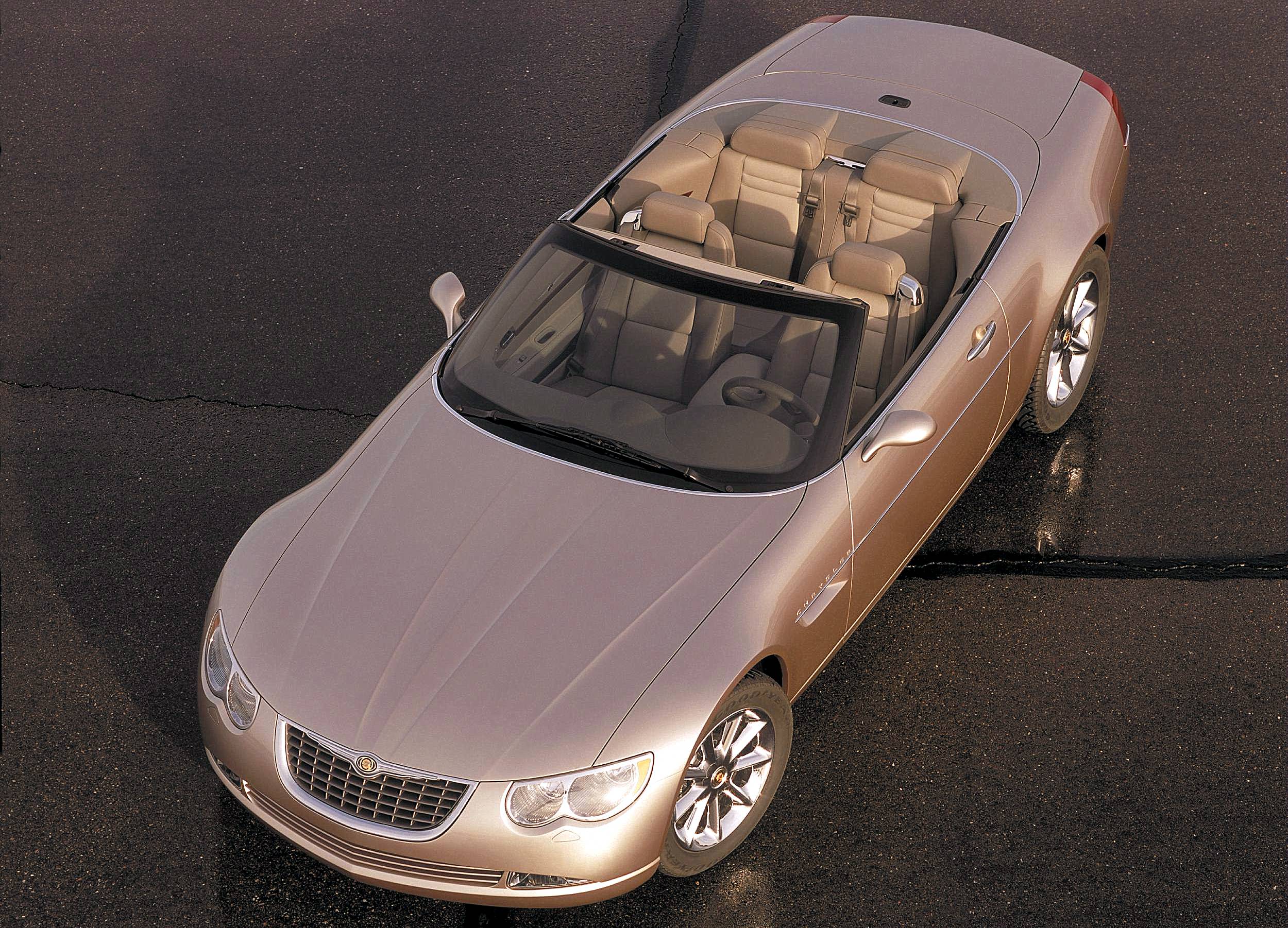
An understated monochromatic taupe-based color palette and purposeful use of chrome enhanced the elegant atmosphere in the concept car. Adjustable pedals guaranteed a comfortable seating position for short and tall drivers and were a premium feature for the time.
“The design and execution of this interior emphasize craftsmanship,” said Lance Wagner, then Senior Design Manager and responsible for the Chrysler 300 HEMI C Concept’s interior. “That is apparent in the California walnut application on the steering wheel, the chrome details, the leather-tailored seats, the one-touch power top, and tonneau cover and the location and fabrication of the Chrysler winged badges, the ignition in the instrument panel, and the gated gear shift.”
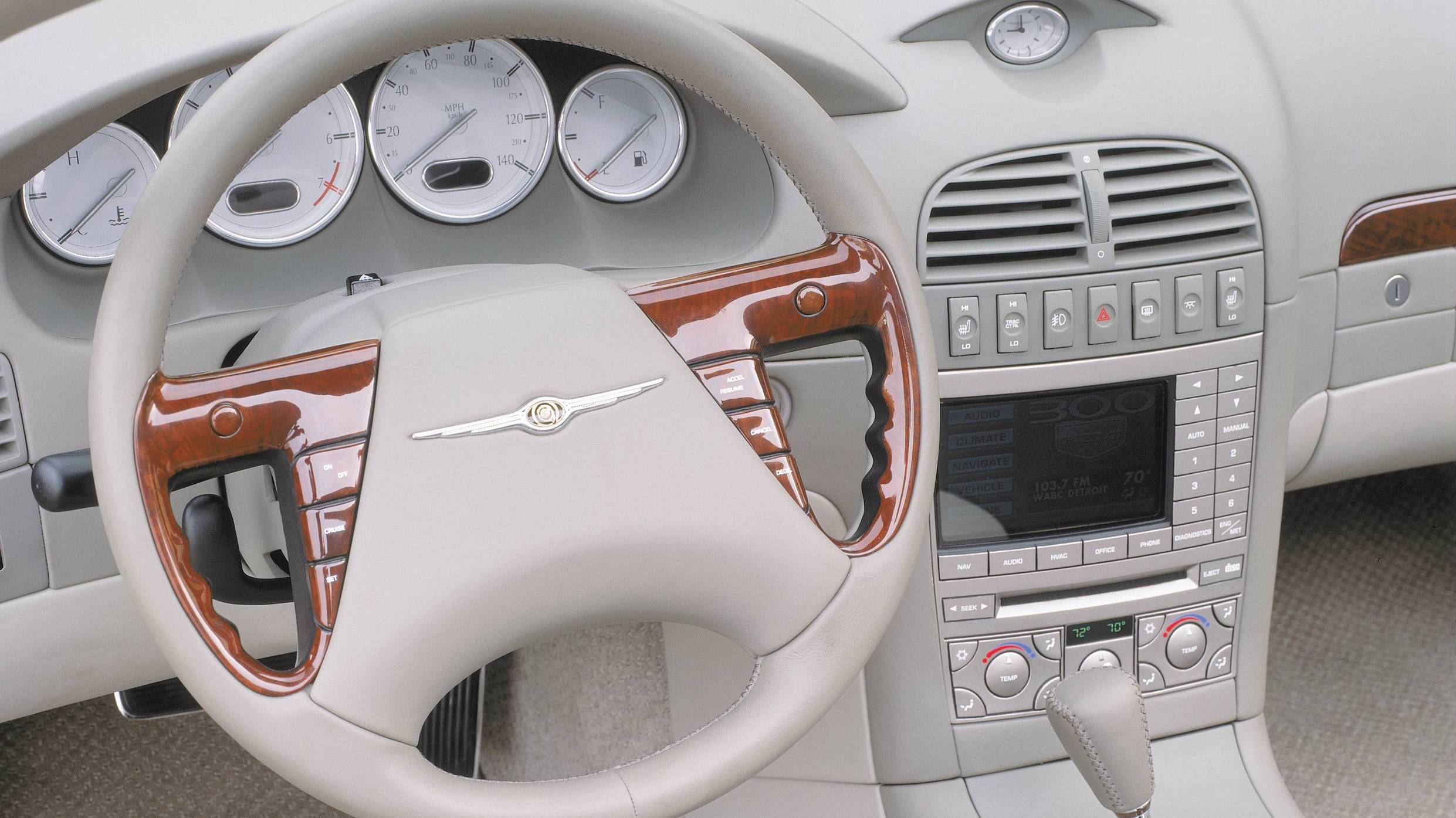
The car featured a prototype driver “Infotronic” system that included a global positioning system (GPS), a trunk-mounted “plug-and-play” laptop computer, Internet access for real-time weather and traffic information, and e-mail. The Infotronic system could be directed by voice commands or through its liquid crystal display in the instrument panel. Voice commands also controlled the vehicle’s audio, climate control, diagnostics, phone, and security system. The Infotronic system was an early precursor to the beloved Uconnect infotainment systems we all have grown to love over the past decade.
Even a fingerprint scanner hooked up to a tiny camera, provided added security to the soft-top muscle car. The vehicle would not function if the driver’s picture and fingerprint did not match the system’s stored information.
A fingerprint scanner hooked up to a tiny camera provided added security, important in any vehicle and especially in a soft-top convertible. The vehicle will not function if the driver’s fingerprint and picture don’t match the system’s information.
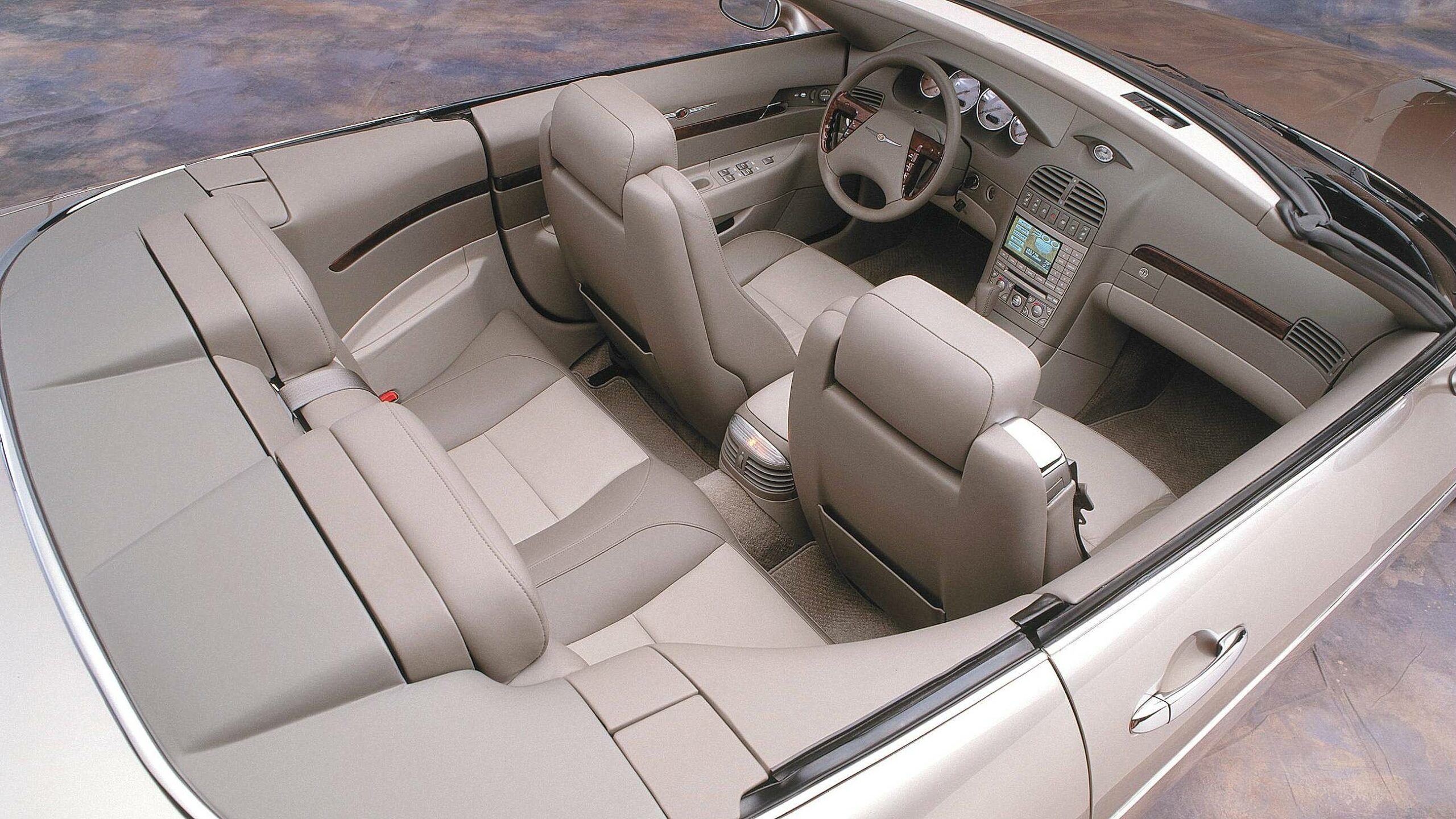
A prototype all-aluminum 5.7-liter (353 cubic-inch) HEMI V8, gave a hint at what was in the works for the 2005 model year vehicles and showcased Chrysler’s upcoming hemispherical combustion pushrod motors. At the time, the engine was rated for 353 horsepower and 353 lb.-ft. of torque (the 2005 variant would be made of 345 cubic inches and make 340 horsepower and 390 lb.-ft. of torque). The prototype HEMI was paired with a robust 4-speed automatic transmission for duty in the 300 HEMI C Concept. The prototype HEMI was capable of sprinting to 60 mph in 5.9 seconds and achieved a top speed of 160 mph.
“This vehicle explores a direction we might take if we were to return to an all-American V8, rear-wheel-drive luxury performance car such as the famed 1957 Chrysler 300 C convertible,” said Tom Gale, then Executive Vice President – Product Development and Design. “The epitome of motoring elegance and affordable luxury, the Chrysler 300 Hemi C Concept adds the heritage only this company can offer, a powerful V8 HEMI engine.”
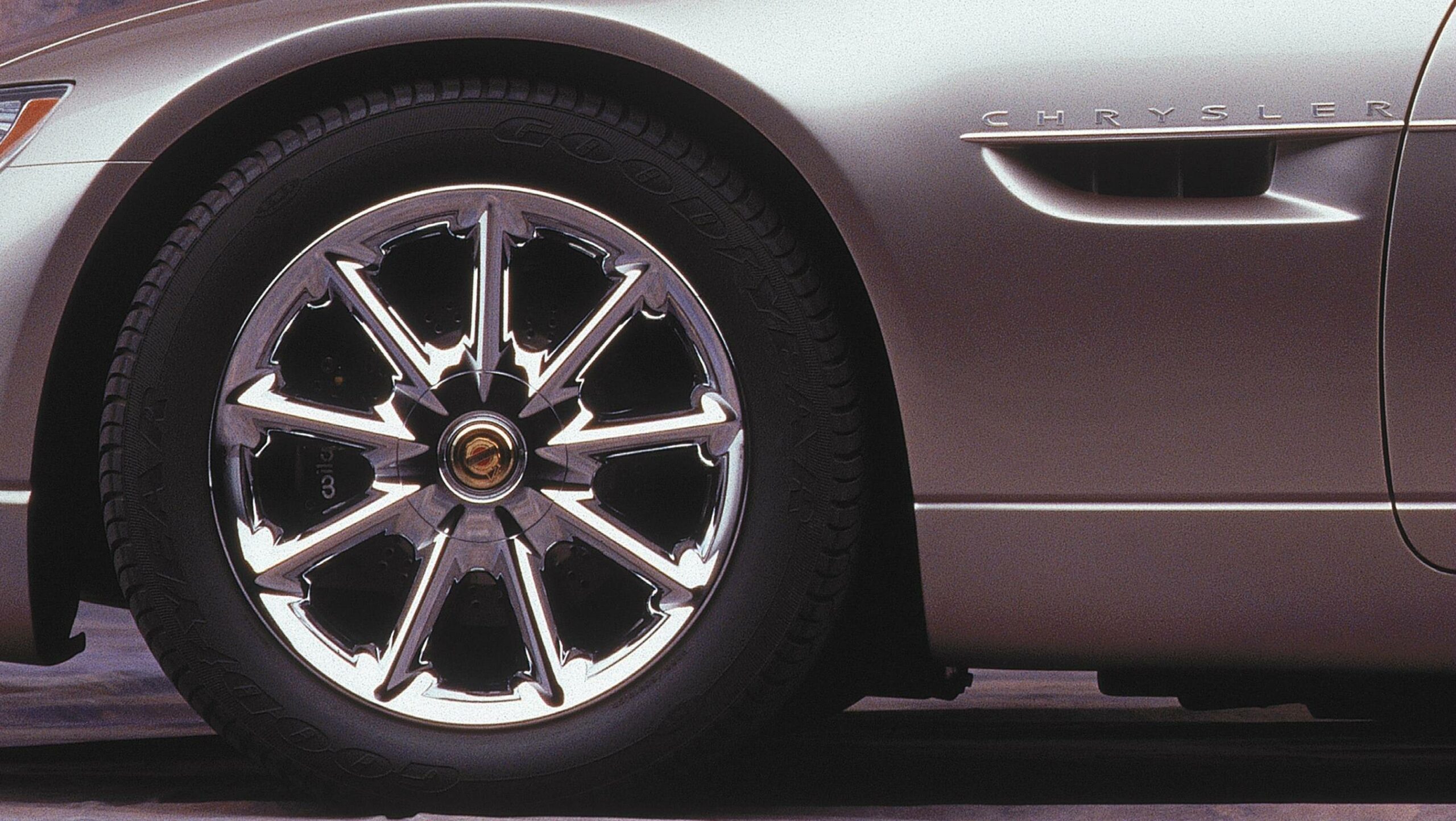
The 300 HEMI C Concept was based on the front-wheel-drive LH architecture (that underpinned the Chrysler 300M, LHS, Concorde, and Dodge Intrepid at the time). The LH architecture was actually designed to be able to adapt front-wheel-drive, rear-wheel-drive, and all-wheel-drive applications and also was the architecture that the previous year’s Dodge Charger R/T Concept was also on.
Underneath its beautiful skin, the 300 HEMI C rode on an independent suspension and modified MacPherson struts for the front, while the Chrysler engineering team put in an aluminum five-link coil-over-shock system in the rear.

To add increased body stiffness, firmer ride, and increased handling characteristics, a unique structural door latch design was developed for the car. This helped the 300 HEMI C become a convertible on the LH-based architecture, something that no convertible was based on.
Chrysler engineers equipped the 300 HEMI C Concept with a set of 14-inch ventilated front and rear disc Wildwood brakes with four-piston calipers. They also gave the car a staggered set of wheels, 19-inch front wheels, and 20-inch rear wheels with custom Goodyear performance tires to amp up the car’s performance.
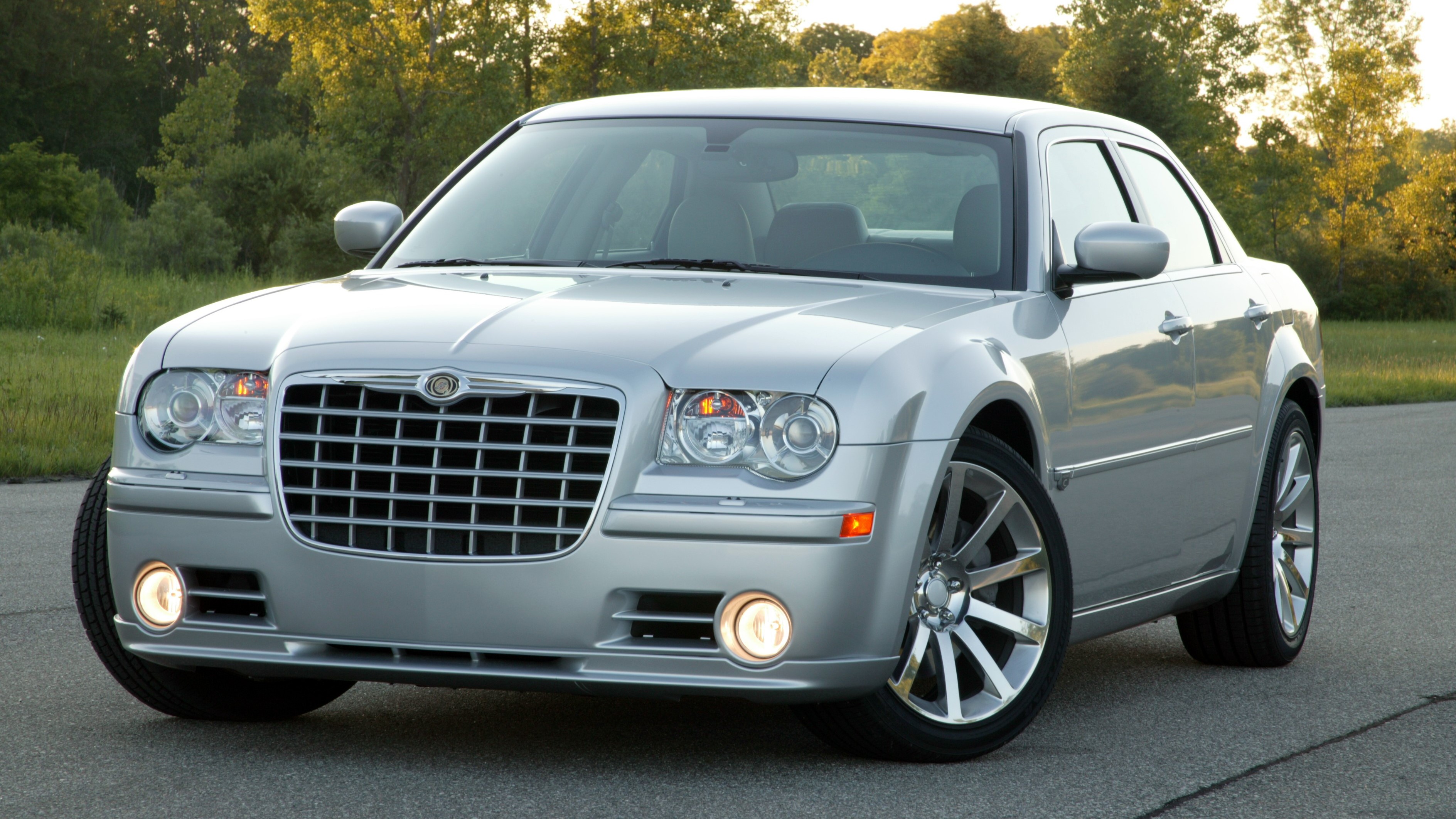
While the 2005 Chrysler 300 Series was a huge success for not only the Chrysler brand but the whole company, it makes us wonder how a world in which this car would have been. A four-passenger, HEMI-powered, luxury muscle convertible that was affordable, would have been a great halo car for the blue-collar luxury Chrysler brand.
2000 Chrysler 300 HEMI C Convertible Concept Image Gallery:

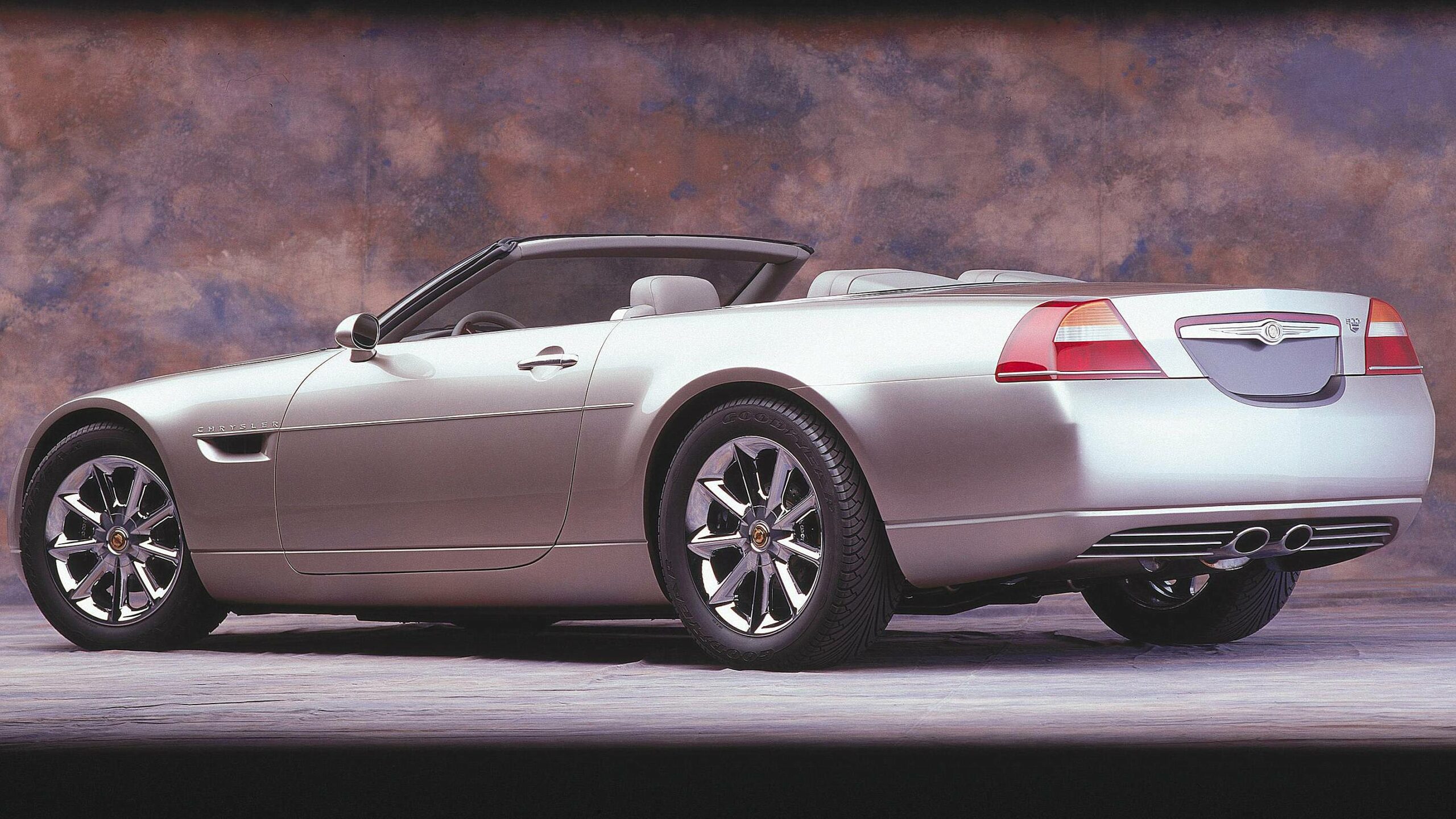
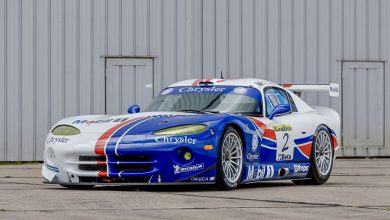




No replies yet
Loading new replies...
Join the full discussion at the Mopar Insiders Forum →